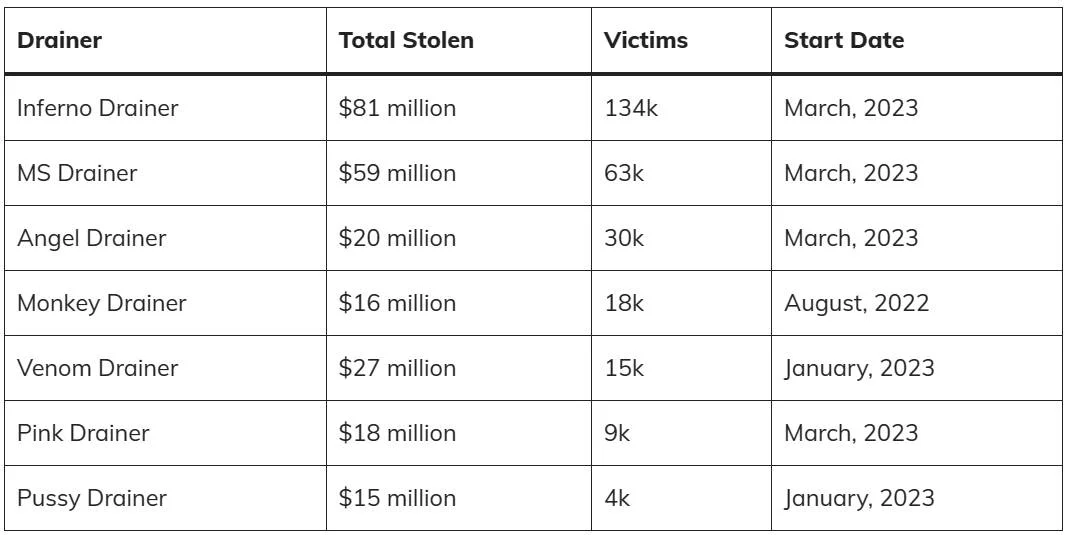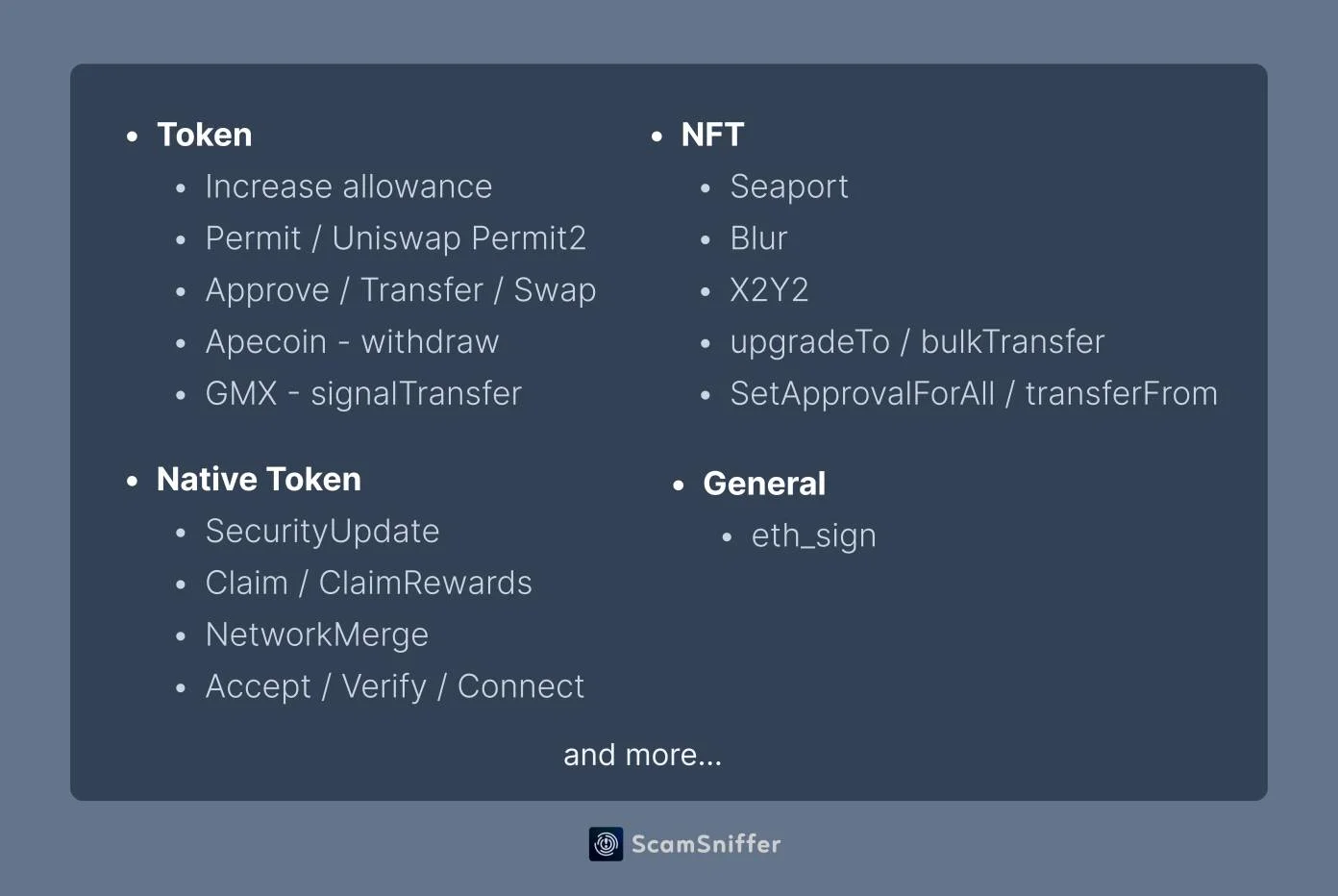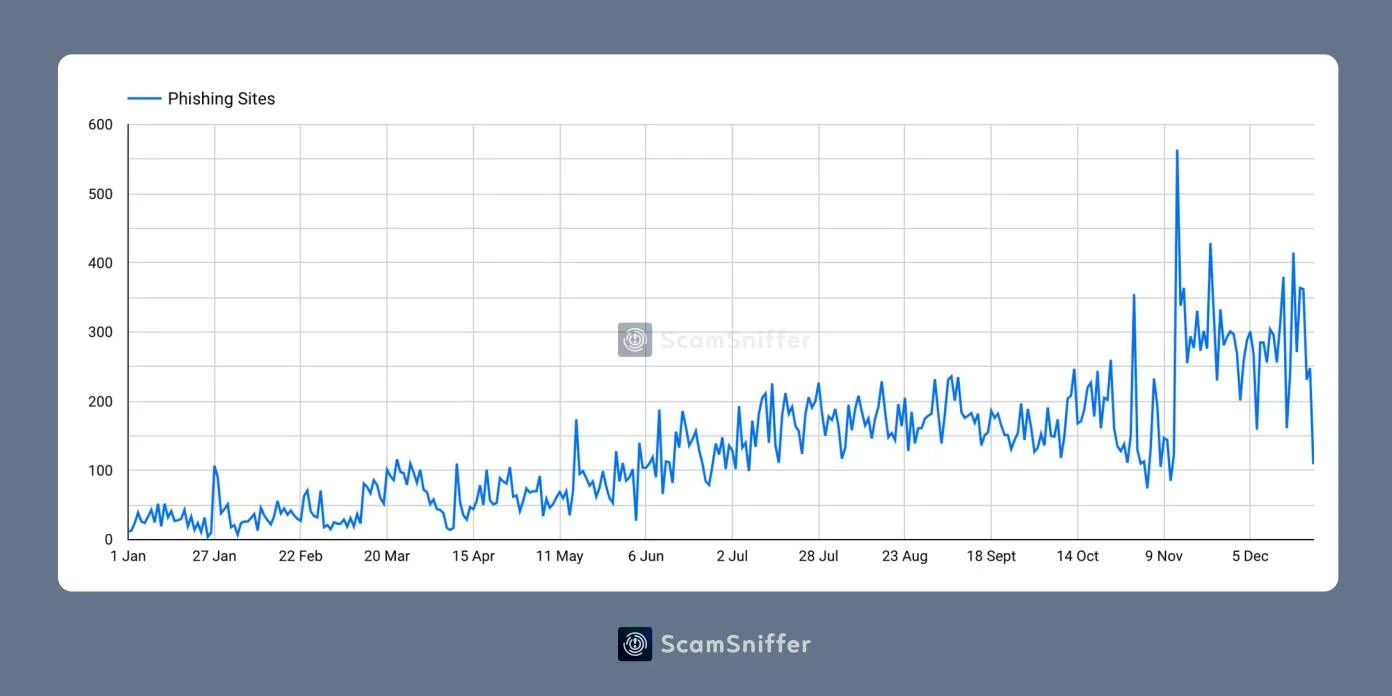Phishing attacks cost nearly 295 million USD in 2023
According to a summary report by security unit Scam Sniffer, the wave of phishing attacks using the “Wallet Drainers” malware caused losses of nearly 295 million USD from about 324 thousand victims in 2023.
“Wallet Drainers” is the name of a type of malicious code capable of automatically taking assets in crypto wallets, often used by hackers on websites or social networking platforms such as Discord, Twitter ads, search results of Google,… for the purpose of performing phishing attacks to gain unjustified benefits.
🚨 Scam Sniffer’s 2023 Report is out! Nearly $300M stolen by phishing campaign targeting crypto wallets – affecting over 324K victims. 🕵️♂️
📈 Trends show no sign of slowing, as new drainers emerge to replace the old. Stay vigilant & informed:https://t.co/IncLeS7j2j
— Scam Sniffer | Web3 Anti-Scam (@realScamSniffer) January 1, 2024
According to Scam Sniffer’s report, it is estimated that the scale and speed of phishing attack activities have grown continuously over the past year. It is worth noting that the source code and management tool “Wallet Drainers” are publicly sold by attackers on forums and programmer groups. In particular, the “Wallet Drainers” software is not only sold at a price but also imposes a 20% service fee.
Scam Sniffer listed 7 “Wallet Drainers” malware vendors in the report, including: Inferno Drainer, MS Drainer, Angel Drainer, Monkey Drainer, Venom Drainer, Pink Drainer and Pussy Drainer.
In this list, Inferno Drainer stands out when it announced its shutdown. Even though it was only 9 months old, it caused losses of up to 81 million USD to 134,000 users. MS Drainer and Angel Drainer, both also founded in March 2023, caused a total loss of about $79 million to more than 93,000 users.
Not only income from selling “Wallet Drainer” software, Scam Sniffer also said the publishers earned at least $47 million from 20% service fees.
List of 7 “Wallet Drainer” malware vendors in Scam Sniffer’s 2023 report
Scam Sniffer also introduces different phishing methods that attackers commonly use, including hacking attacks on official Discord/Twitter accounts, front-end attacks, creating traffic websites access large users such as Airdrop NFT/Tokens, and use paid advertising on Twitter and from Google search results.
Phishing methods are often used by hackers to install “Wallet Drainer” malware.
In addition, the “Wallet Drainer” malicious code is also capable of being established through creating fake signatures on dApps browsers connecting Web3 wallets. When users authenticate transactions, fake transactions will immediately lead to the “exhaustion” of all crypto assets in their e-wallets.
Some fake signatures that can install “Wallet Drainer” are listed by Scam Sniffer.
Scam Sniffer’s analysis determined that phishing sites are increasing steadily every month, and attackers are increasingly using sophisticated tactics to bypass security measures.
The number of phishing websites increases every month
Faced with the growing problem of phishing crime, Scam Sniffer continuously warns about famous “Wallet Drainers” and shares this information on social media platforms to increase awareness and knowledge of the public about fraud risks.
In 2023, they scanned nearly 12 million URL addresses, discovering about 145,000 malicious URLs. The company also provides a blacklist containing about 100,000 malicious domains, committed to creating a safe Web3 environment for billions of users.
Related: Orbit Chain Bridge was Hacked for 81.5 Million USD
Clearly, “phishing attacks” have become a convenient “doorway” for scammers to reach a large number of victims. They can choose specific targets to deploy continuous phishing campaigns, using tools at very low cost, but bringing profits of up to tens of millions of dollars in a short time.
In November 2023 alone, crypto attacks “stolen” $340 million in user assets on DeFi platforms. The entire crypto industry in 2023 will also lose up to 1.95 billion USD due to hacks and security attacks.










